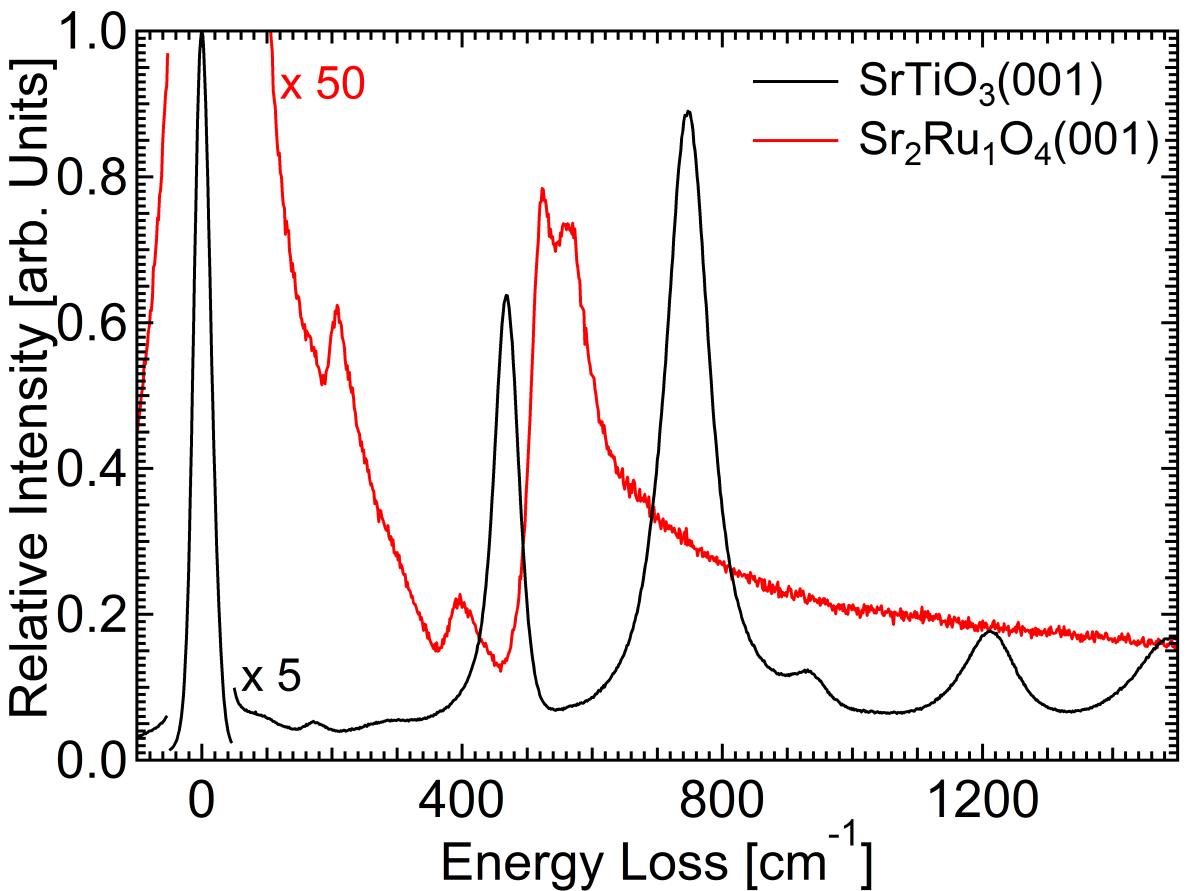
Poster
Surface vibrations of Strontium Ruthenates
1Institute of Physics, Martin-Luther-Universität Halle-Wittenberg, Halle, Germany
2Max-Planck-Institut für Mikrostrukturphysik, Halle, Germany
Ternary perovskite oxides provide a rich playground for materials science and applications in new emerging fields. For the latter applications in all oxide devices, conductive oxide layers are required for the charge transport, which are often realized by thin films of the perovskite SrRuO3(001). The family of strontium ruthenates, which include the so-called Ruddlesden-Popper series Srn+1RunO3n+1 as well as doped variants, shows conductive and in many cases superconductive properties at low temperatures.
Here we present a high-resolution electron energy loss spectroscopy (HREELS) study for the (001) surfaces of SrTiO3, SrRuO3, Sr3Ru2O7, Sr2Ru1O4, as well as Sr2Ru0.8Ti0.2O4. These ternary oxides are characterized by three dipole-active phonon polaritons and their combination losses, whereas for the doped ruthenate Sr2Ru0.8Ti0.2O4 the vibration of the doping Ti can be identified additionally. For selected cases, the surface loss function will be compared with infrared absorption data for bulk samples. For the insulator SrTiO3 we observe strong phonon polaritons, whereas the excitations in the conductive strontium ruthenates exhibits significant damping as shown in Fig. 1. A pronounced deviation from a symmetric loss function is found for the surface of Sr2Ru1O4, which is known to be superconducting at low temperatures. Here the high-energy phonon exhibits a broad Fano-like line shape, which is discussed in terms of a prominent electron-phonon coupling.

Figure 1: HREEL spectra for SrTiO3(001) and Sr2Ru1O4(001) in specular-scattering geometry in red and black, respectively, E0 = 4 eV.